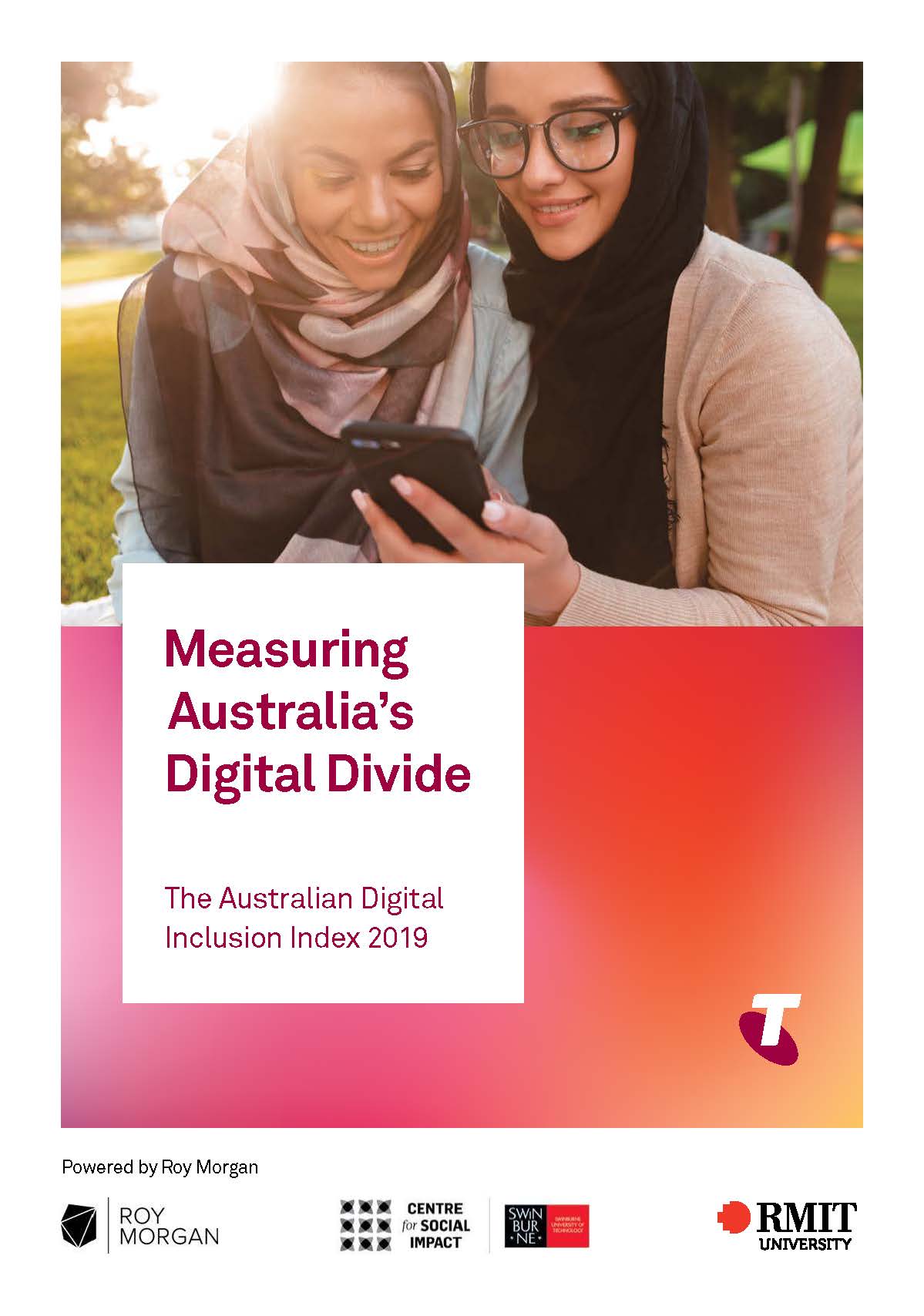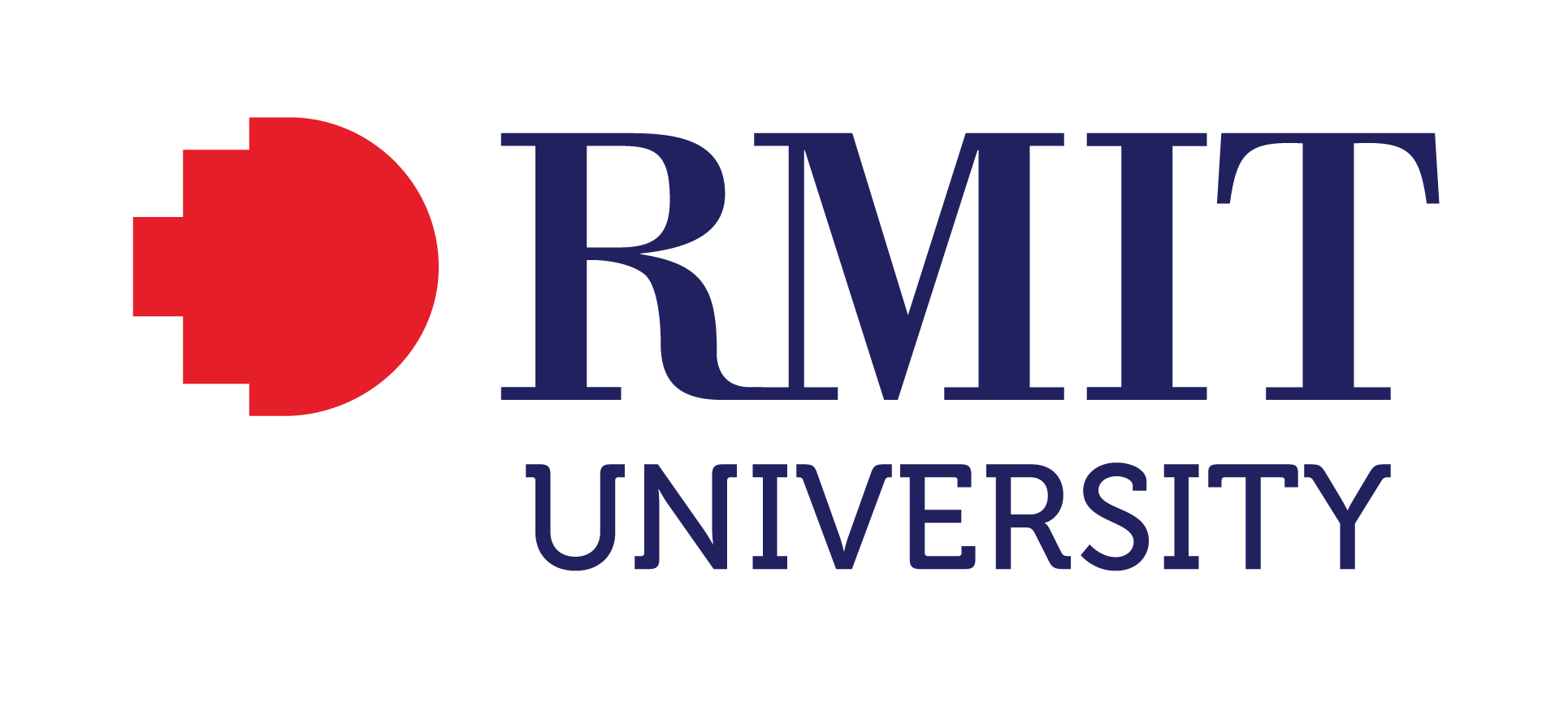This case study was originally published in the 2019 Australian Digital Inclusion Index report, and is derived from the Roy Morgan Single Source dataset. As of 2021, the Australian Digital Inclusion Index is based on the Australian Internet Usage Survey (AIUS). The numerical results of this case study cannot be compared with the refreshed ADII data.
Overall, Australia’s Culturally and Linguistically Diverse (CALD) migrant population records a relatively high level of digital inclusion, with above average levels of Access, Affordability and Digital Ability. However, recent research indicates that recently-arrived CALD migrants are faring less well, particularly with regards to Affordability.
The ADII provides an insight into the nature and extent of the digital inclusion of CALD migrants, defined as people born in non-main English speaking countries who speak a language other than English at home. Given Australia’s long-established commitment to migrant intake and the multifaceted nature of policies that have facilitated skilled, family, humanitarian and other forms of migration, it is not surprising that the CALD migrant group is both sizeable and diverse. In 2019 CALD migrants have an ADII score of 64.7, 2.8 points higher than the national average (61.9), underpinned by better than average Access, Affordability and Digital Ability scores. However, this aggregate data may obscure important differences within the highly varied CALD migrant population. In 2019, we sought to extend our understanding of digital inclusion for a subset of this population about which little is known in relation to digital inclusion – recently-arrived CALD migrants (those arriving in Australia after 2005)1.
To extend our knowledge of the digital inclusion of CALD migrants, the ADII Supplementary Survey2 was conducted with 146 recently-arrived CALD migrants living in Shepparton3, Victoria. Located 180km north of Melbourne, Shepparton is a regional city with a population of 64,000 that has a rich history in settling migrants4. Most recently, Shepparton has been a key settlement location for migrants arriving from the Middle East, Central Asia and Africa under the humanitarian immigration program5.
The research found that recently-arrived CALD migrants in Shepparton have an ADII score of 61.2, 0.7 points below the national average (61.9) and 3.5 points lower than that reported by the broader CALD migrant population (64.7). This below-average ADII score is underpinned by a low level of Affordability. Indeed, a very low Affordability sub-index score offsets the above-average scores recorded by CALD migrants in Shepparton on the Access and Digital Ability sub-indices.
Recently-arrived CALD migrants in Shepparton have an Access score of 82.6, some 6.9 points above the national average (75.7). More than 9 in 10 respondents indicated that they maintained multiple internet access plans across both fixed and mobile networks. Respondents also had access to higher than average fixed and mobile data allowances under these plans. The prevalence of family households in the recently-arrived CALD migrant community may be a factor generating this high level of Access. Evidence from the ABS indicates that family households are more likely to maintain internet connections than other household types6. This is unsurprising given the increasing array of personal electronic devices requiring network connections and varying digital content demands of adults and children.
The maintenance of high levels of connectivity may also be a consequence of the very positive attitude recently-arrived CALD migrants in Shepparton have towards the role that digital technologies play in enhancing their day-to-day life. Around nine in ten respondents (87%) feel that computers and technology gave them more control over their lives and a similar proportion (86%) are committed to learning about new technologies. The comparable national averages for these indicators is 48% and 35% respectively. Overall, the positive attitude respondents had towards digital technologies was the key factor underpinning the above average Digital Ability score recorded by recently-arrived CALD migrants in Shepparton. Their score of 57.6 was 6.8 points above the national average (50.8). Other factors at play in driving up the Digital Ability score for respondents were the prevalent use of the internet for personal audio-visual communication and social media. It is important to note that the level of engagement in some functional activities, such as email, internet banking and online commerce and transactions was substantially below the national average. Use of the internet for searching for information related to education, employment, health and other essential government and technical services and activities was above the national average. With regards to the latter, recently-arrived migrants tend to have regular contact with a range of government and other service agencies and this is increasingly occurring online as a consequence of digital transformation.
Although online government, community and commercial service systems may generate some transactional benefits, they can be difficult to navigate, particularly for those for whom English is not their first language7. Foreseeing that language and literacy may be an inhibitor to digital inclusion for recently-arrived CALD migrants in Shepparton, additional questions focussing on this issue were incorporated into the ADII Supplementary Survey. The results show that four in ten respondents did not read English well or at all (39%). This level of English literacy will clearly impact on the efficacy of online service engagement. The results also revealed that translating online text would alone not be an adequate solution since two-thirds of those that lacked English literacy could also not read in a language other than English – overall 27% of respondents did not read English or a language other than English.
While literacy is an obstacle to enhancing digital inclusion for recently-arrived CALD migrants in Shepparton, Affordability is the key barrier. The Affordability sub-index score recorded by recently-arrived CALD migrants in Shepparton (43.3) is 15.9 points lower than the national average. Although respondents tended to achieve good value for money, as registered by a Value of Expenditure close to the national average, it is the impact of internet access expenditure on household budgets that distinguishes them from the national average. Recently-arrived CALD migrants in Shepparton spend 3.83% of their household income compared to the national average of 1.18%. The result is a Relative Expenditure score of 21.7, some 32.9 points lower than the national average (54.6).
Research into the recently-arrived CALD migrant community in Shepparton extends our understanding of digital inclusion for an important subset of the CALD migrant population.
While Affordability is identified as a key barrier for digital inclusion, the research also sheds light on the impact of low literacy levels in an increasingly digital world. Addressing this issue is important, not simply for recently-arrived CALD migrants, but the 2.36 million Australians who identify as having low levels of English language literacy8.
Further information
For more information, including related data tables and the full citation list, please refer to the 2019 Australian Digital Inclusion Index.
References and footnotes
[1] Alam & Imran (2015) outline the gap in research related to the digital inclusion of the migrant population in Australia. Their study examines aspects of digital inclusion for refugee migrants in the regional Queensland city of Toowoomba. They briefly touch upon the distinct experiences of recently arrived refugees, generating conclusions that accord with those found in our study of recently-arrived CALD migrants in Shepparton. They note “digital exclusion was more pronounced… among the newly arrived refugee migrants as they could not access and use the internet due to barriers associated with affordability, language and literacy” (Alam & Imran, 2015, p.358).
[2] See Appendix for a general description of the ADII Supplementary Survey methodology. The Shepparton survey was administered face-to-face (using tablets and laptops to record data) by members of the ADII research team with assistance from local community service providers. Some respondents were assisted in completing the survey in their first language by community service staff, community members or family members.
[3] The data was collected from a convenience sample. It is not statistically representative of the newly-arrived CALD migrant population of Shepparton. Analysis against the ABS Census of Population and Housing (2016a) reveals that the main countries of origin for recently-arrived CALD migrants in Shepparton are captured in the Supplementary Survey data, but migrants from India, the Philippines and Taiwan are under-represented, while those from Afghanistan are over-represented.
[4] ABS (2017a).
[5] See: FECCA (2015).
[6] See: ABS (2016b); ABS (2018b).
[7] For a discussion of issues of online service provision see Australian National Audit Office (2015) and Sleep & Tranter (2017).
[8] Identified as Below Level 1/Level 1 Literacy in ABS (2013).
Citation
Thomas, J, Barraket, J, Wilson, C, Ewing, S, MacDonald, T, Tucker, J & Rennie, E, 2019, Measuring Australia’s Digital Divide: The Australian Digital Inclusion Index 2019, RMIT University, Melbourne, for Telstra. DOI: www.dx.doi.org/10.25916/5d6478f373869







